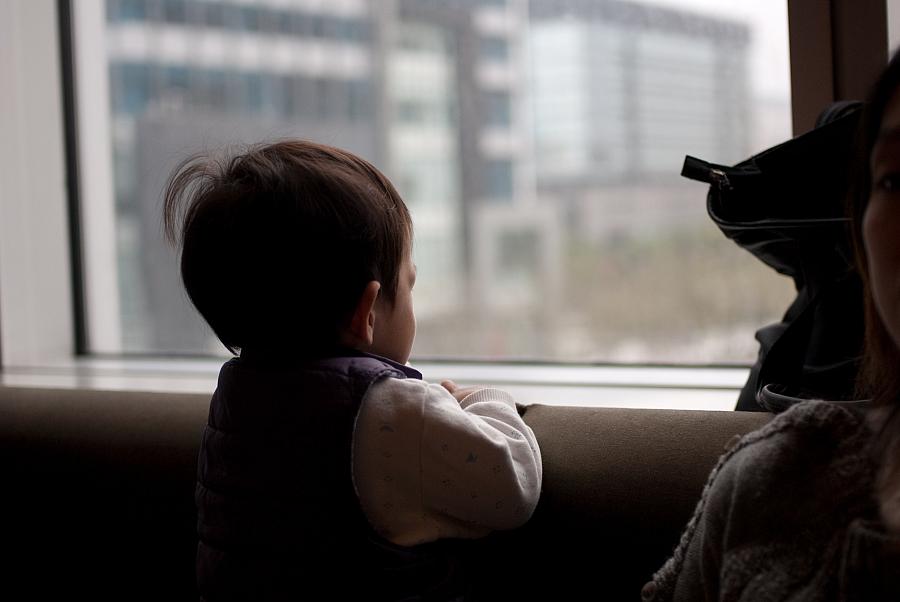COVID-19 poses stark challenges for an already fragile foster care system

(Photo by Sam Deng via Flickr/Creative Commons)
The U.S. foster care system has been plagued with challenges for more than a decade, with the number of children in the system due to parental drug use more than doubling since 2000.
The downstream effects of the opioid crisis on children cannot be overstated. Yet, while the particular impact of the epidemic on the foster care system has received some attention, the interplay between the two is not well-understood. Now, layer on yet another test for vulnerable children and their parents: a global pandemic.
Recently, the foster care system was beginning to show glimmers of progress. The number of children entering care and the number in the system dropped by 3,788, to 437,283 in the 2018 fiscal year, down from the 441,071 in the fiscal year prior, according to the Adoption and Foster Care Analysis and Reporting System (AFCARS).
Additionally, a “record number of children” were adopted from foster care, according to the Pew Research Center, with the share of children leaving foster care for adoptive homes rising from 21% to 25% from fiscal year 2014 to 2018.
That was before the pandemic.
As the coronavirus swept through the country and stay at home policies inflicted a different kind of pain — financial, psychological and emotional — those struggling with addiction may have succumbed, leading to a surge of suspected overdoses. While temporarily clouded by all- consuming concerns over the virus, these problems will almost certainly affect children’s well-being and could lead to more challenges for the child welfare system.
Child abuse is also a rising concern.
The volume of calls for domestic violence against children has fallen in some states, which at first-glance appears to be a win. But calls resulting in emergency department visits are going up, according to the National Center on Child Abuse and Neglect. Fewer but more severe calls indicate a hidden epidemic of violence during stay-at-home orders.
The drop in call rates is likely due to children going unseen by police officers, lawyers, doctors and, overwhelmingly, teachers — who made 21% of the 4.3 million referrals in 2018, according to federal data.
Our project for the 2020 National Fellowship will explore the impact of the COVID-19 pandemic and the related stay-at-home orders on children and young adults in the foster care system, with special attention to their physical, emotional and psychological well-being, and the potential to create or worsen adverse childhood experiences.
Children’s advocates, pediatricians and other experts worry that there may not be enough families willing to take children in, given the continued risk of infection. Older adults and families with immunocompromised members, especially, are unlikely to take in children at the same rate as they were pre-pandemic.
And for biological parents, court closures in states with the most stringent lockdown measures paused all “nonessential” filings for a time, creating a backlog of cases. Also delayed are reunification visits, which one expert characterized as “the single most important factor related to whether the child remains in out-of-home care,” in a briefing conducted by Families For Our Children.
Even agencies that allow in-person reunification visits do so with social distancing measures in place, which could leave children feeling ignored or rejected.
In certain other states, stay-at-home measures can isolate these families from many of the resources for foster parents that help them support foster children. Programs like partial hospitalization for children with serious behavioral health needs and community mentoring programs — which would typically help foster children by teaching them coping mechanisms and giving foster parents a chance for respite — have been disrupted by the pandemic. Even obtaining food, prescription drugs and basic supplies like diapers puts foster parents at risk of exposure.
Despite all of the problems with the foster care system, many young adults turning 21 during the pandemic want to remain inside the system, as exiting risks losing a vital connection to any sort of support and stability. In one of the largest studies to track outcomes of youth who age out of foster care, between 31% and 46% were homeless at least once by age 26.
More than half of the states in the country have gained approval for federal funding to enact extended foster care programs, including transitional living programs, for youth ages 18-21, according to the U.S. Government Accountability Office.
But many do not have leeway for aging out kids, and advocates are asking for this age group to be able to reenter with as few restrictions as possible during the public health emergency.
Our project will zero in on the wave of challenges children in foster care face, from enforced social distance visits to delayed reunification, to aging-out at a time when the support of a foster family and service providers is critical.
We also plan to spotlight the unique challenges for foster parents who are seniors or grandparents caring for young children and adolescents at a time when most public health experts have warned them to isolate, even from family.
These are the stories we plan to tell, but we don’t yet know our own “blind spots” and are committed to hearing the untold stories and unseen challenges from sources in these communities that may influence or completely redirect our path.

